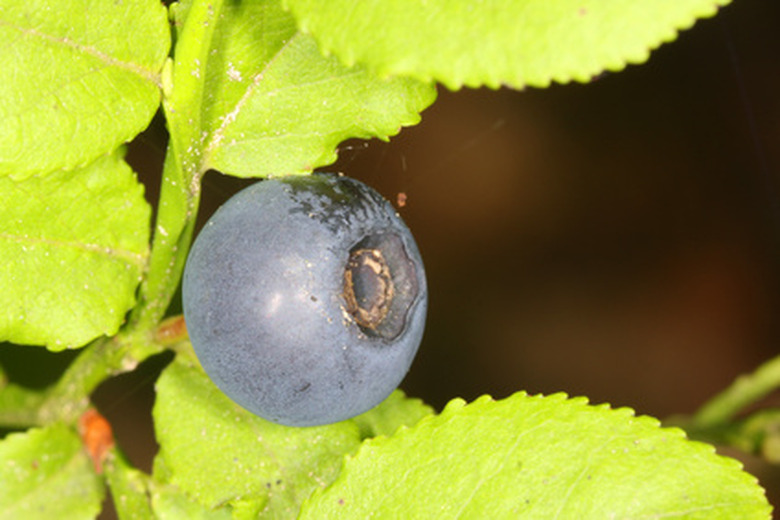The Best Dwarf Blueberry Plants
If you want to grow blueberries but are limited in space, then dwarf or semi-dwarf blueberries are your best bet. Dwarf blueberries are about 1/3 to 1/2 the size of regular blueberries, which makes them perfect for containers and backyards. Dwarf blueberries are often referred to as half-high blueberries. Please note, "dwarf" only refers to the size of the bush and not the size of the berries.
Top Hat
Top Hat blueberry bushes (V. corymbosum x V. angustifolium) only grow about 18 to 24 inches high, with a similar width. In the spring, the bush becomes covered with white flowers that transform into pea-sized, light blueberries mid-season. In the fall, its leaves turn bright red. The berries are firm with a wild blueberry flavor, similar to what you find in the grocery store. The bush is cold-hardy and capable of being grown in USDA zones 3 through 7. It likes an acidic soil (between 4.5 to 5.5 pH) in full sun or partial shade.
- If you want to grow blueberries but are limited in space, then dwarf or semi-dwarf blueberries are your best bet.
- In the spring, the bush becomes covered with white flowers that transform into pea-sized, light blueberries mid-season.
Sunshine Blue
Sunshine Blue (Vaccinium corymbosum "Sunshine Blue") is a semi-dwarf southern Highbush blueberry that grows about three to four feet tall, with a similar spread. Around May it produces bright pink, bell-shaped flowers that turn into dime-sized berries in late July through September. Berries are juicy with a sweet, yet tangy flavor. The bush is self-pollinating, cold-hardy and tolerant of higher pH soils. It is considered an evergreen, but its blue-green leaves may turn burgundy in the fall. It can be grown in USDA zones 5 through 10. For best results, plant it in well-draining, slightly acidic soil in full sun.
- Sunshine Blue (Vaccinium corymbosum "Sunshine Blue") is a semi-dwarf southern Highbush blueberry that grows about three to four feet tall, with a similar spread.
Northblue
Northblue blueberry bushes grow about 20 to 30 inches tall, with a similar spread. They produce white flowers tinged with pink in the spring. Berries appear sometime between the end of June and mid-July. The berries are large, plump, navy blue and firm, with a sweet, wild blueberry flavor. It has large, dark green leaves that turn a brilliant red in the fall. It is cold-hardy and can be grown in USDA zones 3 through 7. Plant in a well-draining soil in full sun and keep the roots moist. It is self-pollinating.
- Northblue blueberry bushes grow about 20 to 30 inches tall, with a similar spread.
Northsky
Northsky bushes grow about 18 to 24 inches high, with a 30-inch spread. In the spring, they produce small white flowers that transform into small berries around July. They also have deep green leaves that turn a beautiful red in the fall. Berries are a deep sky-blue color and are known for their juicy, rich, wild berry flavor. It is one of the hardiest blueberries and is self-pollinating. Plant it in full sun in USDA zones 3 through 7.
Other Dwarf Blueberries
Three other varieties of half-high blueberries are also popular. All three are capable of being grown in USDA zones 3 through 7 and have foliage that turns red in the fall. They are Northcountry, Polaris and Chippewa.
- Northsky bushes grow about 18 to 24 inches high, with a 30-inch spread.
Northcountry grows about 18 to 24 inches tall, with a 36-inch spread. It produces a medium-sized, sky-blue, sweet berry in early to mid-season. Polaris grows about three feet tall, with a similar spread. It produces berries early in the season that are firm, light blue, aromatic and medium-sized with a sweet flavor. Chippewa has a similar height and spread to Polaris. It produces large, light blue berries with a sweet flavor mid-season.
